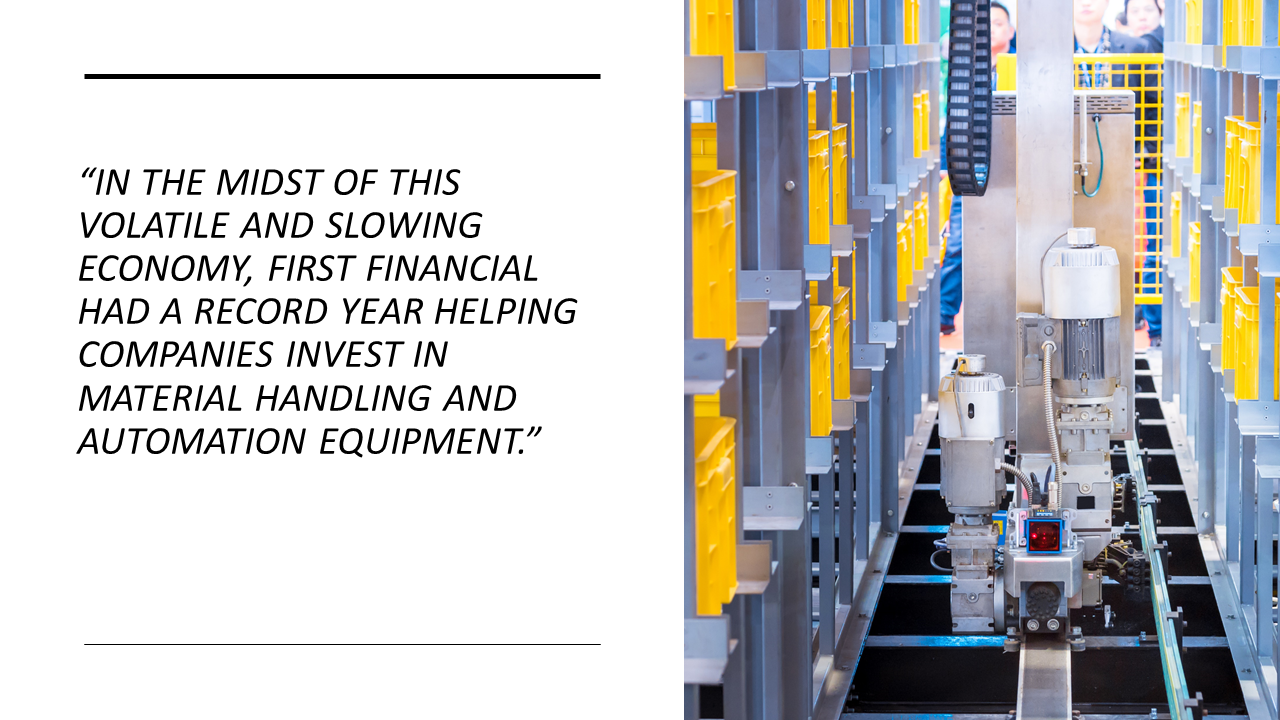
Throughout most of 2020, the COVID-19 pandemic roiled financial markets, threatening businesses and impeding access to capital. While many companies needed to invest in their infrastructure, most tended toward managing liquidity rather than buying equipment outright. To complicate matters, capital markets tightened their lending standards. Yet despite being a cash-sensitive year, 39% of manufacturing businesses increased their technology investments beyond their pre-COVID budgeted levels.
E-Commerce Accelerates Automation Projects
For many companies, automation was a strategic investment in direct response to the disruption caused by COVID. As online shopping skyrocketed, supply chains suffered severe disruptions and businesses sought desperately to keep pace with the widespread embracement of e-commerce while maintaining a safe work environment for their employees. Reports indicate the boom in e-commerce sales for 2020 totaled $794.50 billion just in the US alone – up 32.4% year-over-year.
Global e-commerce sales are predicted to surpass $4.5 trillion in 2021, and we are witnessing explosive growth in the automation of fulfillment and distribution networks. Currently, only 14% of retailers are utilizing automation across their fulfillment locations, and 21% expect full automation in the next 12 months – representing a 50% growth over the prior year period. By leveraging warehouse automation solutions, managers at distribution centers and warehouses can increase accuracy and productivity, operate more efficiently, grow faster and ultimately better serve their customers.
Maintaining Liquidity Through Leasing
Although the operational benefits and financial justifications of automation are obvious, many businesses continue to delay essential projects and capital equipment expenditures. Automation integrations can require large upfront payments that result in years of payback, and usually come with a hefty price tag – particularly when you consider soft costs for installation, engineering, and software. Given today’s economic challenges, banks have severely tightened their lending parameters, and many have labeled the automation and material handling sectors a credit risk.
In contrast, First Financial has been financing new automation technology for mid-sized to Fortune 500 companies at record levels, allowing them to forge ahead with critical equipment acquisitions. By partnering with First Financial to lease their automation projects, our customers often realize a “day one” savings as operational benefits exceed the monthly cost of a lease. For unlike a cash purchase or bank loan, leasing provides 100% financing – covering all costs and eliminating the need for a large upfront payment. We make any and all initial upfront progress payments, so our customers do not start paying for new automation solutions until after it has been fully implemented.
Over the last year alone, our investments in automation and material handling equipment are up over 30% from the prior year. If you are looking to conserve cash and bring predictability to expenses while moving forward with your automation projects, First Financial is here to help. For over 20 years we have partnered with companies across a wide range of industries to help them acquire material handling and automation equipment. Let us do the same for you.
